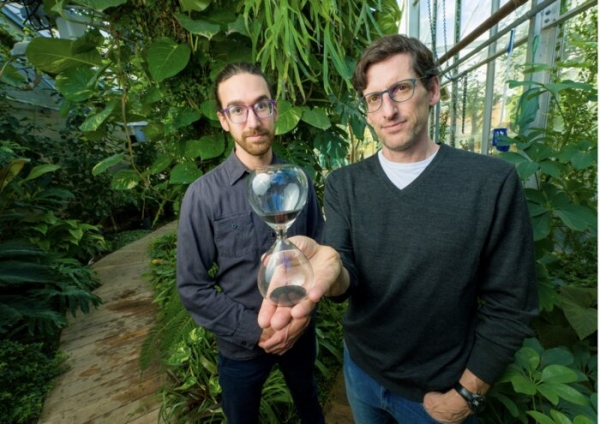If plants were a bit more ambulatory, Peter Adler and Michael Stemkovski might find their work to be a bit less urgent.
If whenever the weather got too hot or dry, crested wheatgrass, yellow rabbitbrush and silvery groves of quaking aspen could choose to wriggle their extremities out of the soil and wander upslope to more hospitable environments, plants like these might have a better chance at surviving climate change. But, of course, they can’t.
It’s actually the tedious immobility of plants that these two researchers find most fascinating. Adler, a plant ecologist in S. J. and Jessie E. Quinney College of Natural Resources and Stemkovski, a Ph.D. student from the Department of Biology, investigate how a changing climate is transforming vegetation across landscapes in the West. They have a captive audience with plants.
Rooted in the soil as they are, plants have access only to what is immediately available in their environment — water, nutrients, sunlight, and temperature. Their immediate circumstances determine whether they live and reproduce, or wither and die. Even seemingly small tweaks in these basic elements have the potential to trigger a landscape-level demise for entire swaths of grasses, shrubs and trees, says Stemkovski. Or to nudge their progenitors, over several plant-lifetimes, higher up a mountain or farther north or in a quest for a more comfortable habitat.
Read more at S.J. & Jessie E. Quinney College of Natural Resources, Utah State University
Image: Rooted in the soil, plants have access only to what is immediately available in their environment — water, nutrients, sunlight, and temperature. Their immediate circumstances determine whether they live and reproduce, or wither and die. Even seemingly small tweaks in these basic elements have the potential to trigger a landscape-level demise for entire swaths of grasses, shrubs and trees. (Credit: Levi Sim)


